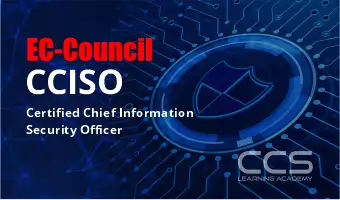Filter by Topic
Filter by Vendor
Apache Spark for Data Scientists
Course Description Learn Spark skills from a data science perspective …
What you'll learn
The essentials of Spark architecture and applications
How to execute Spark Programs
How to create and manipulate both RDDs (Resilient Distributed Datasets) and UDFs (Unified Data Frames)
How to integrate machine learning into Spark applications
How to use Spark Streaming
Developing with Spark for Big Data (TTSK7505)
Course Description Learn advanced Big Data and Spark skills to …
What you'll learn
The essentials of Spark architecture and applications
How to execute Spark Programs
How to create and manipulate both RDDs (Resilient Distributed Datasets) and UDFs (Unified Data Frames)
How to persist and restore data frames
Essential NOSQL access
How to integrate machine learning into Spark applications
How to use Spark Streaming and Kafka to create streaming applications
Hadoop Developer Foundations
Course Description New – Learn about the Hadoop ecosystem and …
What you'll learn
Introduction to Hadoop
HDFS
YARN
Data Ingestion
HBase
Oozie
Working with Hive
Hive advanced
Hive in Cloudera/Hortonworks Distribution (or tools of choice)
Working with Spark
Spark Basics
Spark Shell
RDDs
Spark Dataframes and Datasets
Spark SQL
Spark API programming
Spark and Hadoop
Machine Learning (ML/MLlib)
GraphX
Spark Streaming
Introduction to Hadoop Administration (TTDS6503)
Course Description Learn how to install, maintain, monitor, troubleshoot, optimize, …
What you'll learn
Understand the benefits of distributed computing
Understand the Hadoop architecture (including HDFS and MapReduce)
Define administrator participation in Big Data projects
Plan, implement, and maintain Hadoop clusters
Deploy and maintain additional Big Data tools (Pig, Hive, Flume, etc.)
Plan, deploy and maintain HBase on a Hadoop cluster
Monitor and maintain hundreds of servers
Pinpoint performance bottlenecks and fix them
Machine Learning Essentials with Python (TTML5506-P)
Learn how Artificial Intelligence is being applied in modern business. …
What you'll learn
Popular machine learning algorithms, their applicability and limitations
Practical application of these methods in a machine learning environment
Practical algorithm use cases and limitations
Agile Coaching Workshop (ICP-ACC)
Course Description New – Learn a practical, real-world framework designed …
What you'll learn
The definition of Agile coaching and the set of competencies and practices associated with being a coach.
How to develop ethical and professional coaching standards and agreements and how to apply them in your coaching engagements with teams and organizations.
The various roles, skillsets and disciplines of an Agile coach – coaching, facilitating, mentoring, teaching and how to develop “your style,” moving in and out of those roles while remaining flexible, open and confident.
The philosophy behind servant leadership and practices and techniques to enable you to become a true servant leader; putting the needs of others first to facilitate the development of high performance teams.
Agile Coach thinking – the mindset shift necessary to help you, and others, focus on team improvement, value-driven delivery, and leveraging constraints while living in the present moment, staying curious, innovative and having fun.
Ways to establish mutual trust allowing you to create a safe, supportive environment in which your team can excel.
Active listening and powerful questioning techniques utilized to leverage your ability to focus on what is being said and maximizing communication and collaboration through seeking and receiving information.
Advanced techniques in planning and goal setting in order to help the team/organization achieve their goals and your agreed-upon coaching results.
Techniques in creating awareness and designing in actions and learning which will assist you in managing progress and accountability within the team.
The use of ASPE’s Agile Coaching Competencies & Practices Framework — a framework for understanding and incorporating Purpose, Proficiency and Practices into your coaching engagements.
Certified Chief Information Security Officer | CCISO
Course Description The CCISO Certification is an industry-leading program that …
What you'll learn
Prepare for the CCISO exam
Navigate the day-to-day responsibilities of a CISO
Consider the technical aspects of the CISO role from an executive perspective
Plan security and financial strategies
Align CISO tasks with business goals and risk tolerance
Certified SAFe® Release Train Engineer (RTE)
Description In this three-day course you will gain an in-depth …
What you'll learn
Identify the effective RTE behaviors
Prepare & Organize for PI Planning
Facilitate PI Planning Team break outs and Plan review
Facilitate Management Problem Solving
Facilitate ART ROAM program risks
Facilitate Confidence Vote enabling transparency
Facilitate PI Planning across multiple locations, time zones and continents
Effectively Execute Program Increment
Fostering Relentless Improvement across the ART










